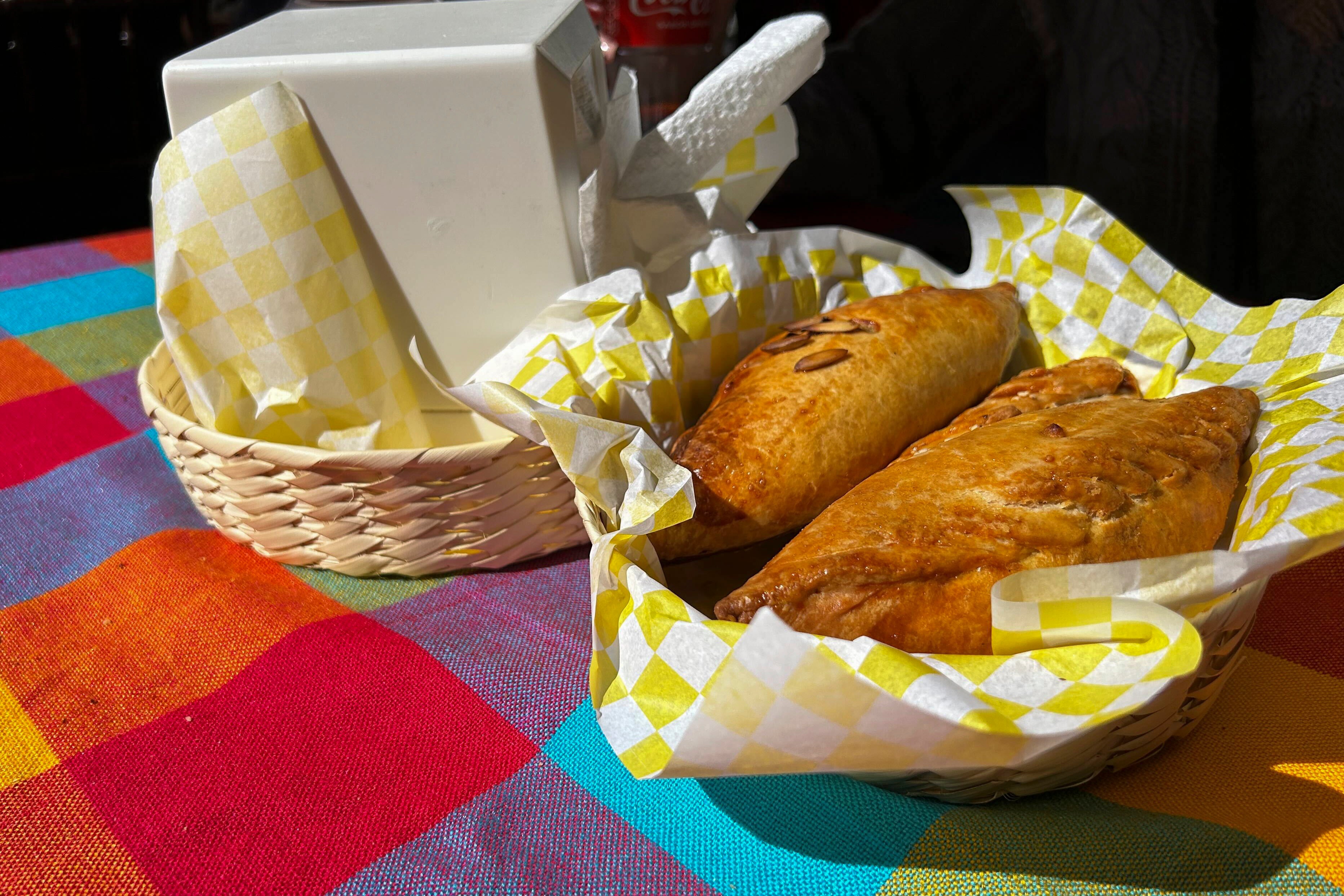The Cornish pasty is big in Mexico and an old graveyard holds the clue to why
Hundreds of miners travelled to Mexico in 1824 to work in Real del Monte, extracting silver, copper, zinc, gold and mercury

Your support helps us to tell the story
From reproductive rights to climate change to Big Tech, The Independent is on the ground when the story is developing. Whether it's investigating the financials of Elon Musk's pro-Trump PAC or producing our latest documentary, 'The A Word', which shines a light on the American women fighting for reproductive rights, we know how important it is to parse out the facts from the messaging.
At such a critical moment in US history, we need reporters on the ground. Your donation allows us to keep sending journalists to speak to both sides of the story.
The Independent is trusted by Americans across the entire political spectrum. And unlike many other quality news outlets, we choose not to lock Americans out of our reporting and analysis with paywalls. We believe quality journalism should be available to everyone, paid for by those who can afford it.
Your support makes all the difference.Isabel Arriaga Lozano carefully fills a small pastry with a savory mix of meat, potatoes and chili pepper. She is crafting a “paste” (pronounced PAH-stay), a beloved Mexican snack with a rich history.
Originating in the mining town of Real del Monte, in the Mexican central state of Hidalgo, the “paste” was introduced by British miners in the 1820s and has since become a local culinary tradition. Each year, food enthusiasts converge on Real del Monte to celebrate the International Paste Festival, honoring its delicious heritage.
Pastes are popular across Mexico, with fillings ranging from spicy Mexican mole to sweeter concoctions like pineapple or blueberry with cheese.
And although many are unaware of their surprising origin, a graveyard at the top of a cobbled hill holds the clue: around 700 graves sit covered in moss and lichen with distinctly English names. These are the graves of the hundreds of miners who traveled to Mexico in 1824 to work in Real del Monte, extracting silver, copper, zinc, gold and mercury.
The miners came from Cornwall, a region on the southwest of England which had a similar strong mining community in the 19th century. They brought with them this iconic snack, known in England as a “Cornish pasty.”

Cornish pasties date from the 13th century, when they were the food of nobility and the upper crust. By the 19th century, they became popular with working class Cornish families. A simple shortcrust pastry case was filled with cheap cuts of meat alongside potatoes, rutabaga and onion. The pastry was then crimped at the side, sealing the ingredients and giving the eater something to hold onto.
The crimped side would serve as a sort of handle, meaning that the miners could hold onto their lunch without getting the rest of the pasty dirtied with mud and grime from working in the mines.
Arriaga said she has made pastes for 30 years. She married into a paste-making family and took over the business when her husband passed away. Pastes, she said, have become a crucial part of life in the “magical town” of Real del Monte. “I think around 50% of us here make a living from this,” she said, highlighting a very special ingredient that goes into every snack. “It’s, above all, the love we put into every paste that makes it a good product."
She said pastes have persisted thanks to the “mexicanization” of the ingredients. Compared to Cornish pasties, she said, "in Mexico (...) we always look for that spicy flavor ... we add pepper, we add parsley.”

Pastes are such an iconic snack in Real del Monte that they have their own museum.
“The paste arrived in the year 1824, with the English miners from Cornwall who came to Real del Monte to start working in the mines," said Epifanio Garcés Torres, director of the town's Paste Museum. "The first Englishwoman to bake (one) here in Real del Monte was Mary Jenkins in 1824.”
Visitors at this year's paste festival tried an array of treats. Where pastes in the U.K. have adopted fillings such as “full English breakfast,” “steak and ale” or “lamb and mint,” the Mexican influence on the pastry here is clear: Frijoles (beans); spiced mole sauce or Mexican style tuna — with the obligatory chili pepper — are on the menu.
“They’re delicious," said one festival goer.
The festival featured colorful banners and signs displaying the Mexican, British and Cornish flags, highlighting a unique connection between Mexico and Britain that goes back 200 years — and linking the towns of Real del Monte and Cornwall, which sit more than 5,300 miles (8,530 kilometers) apart.